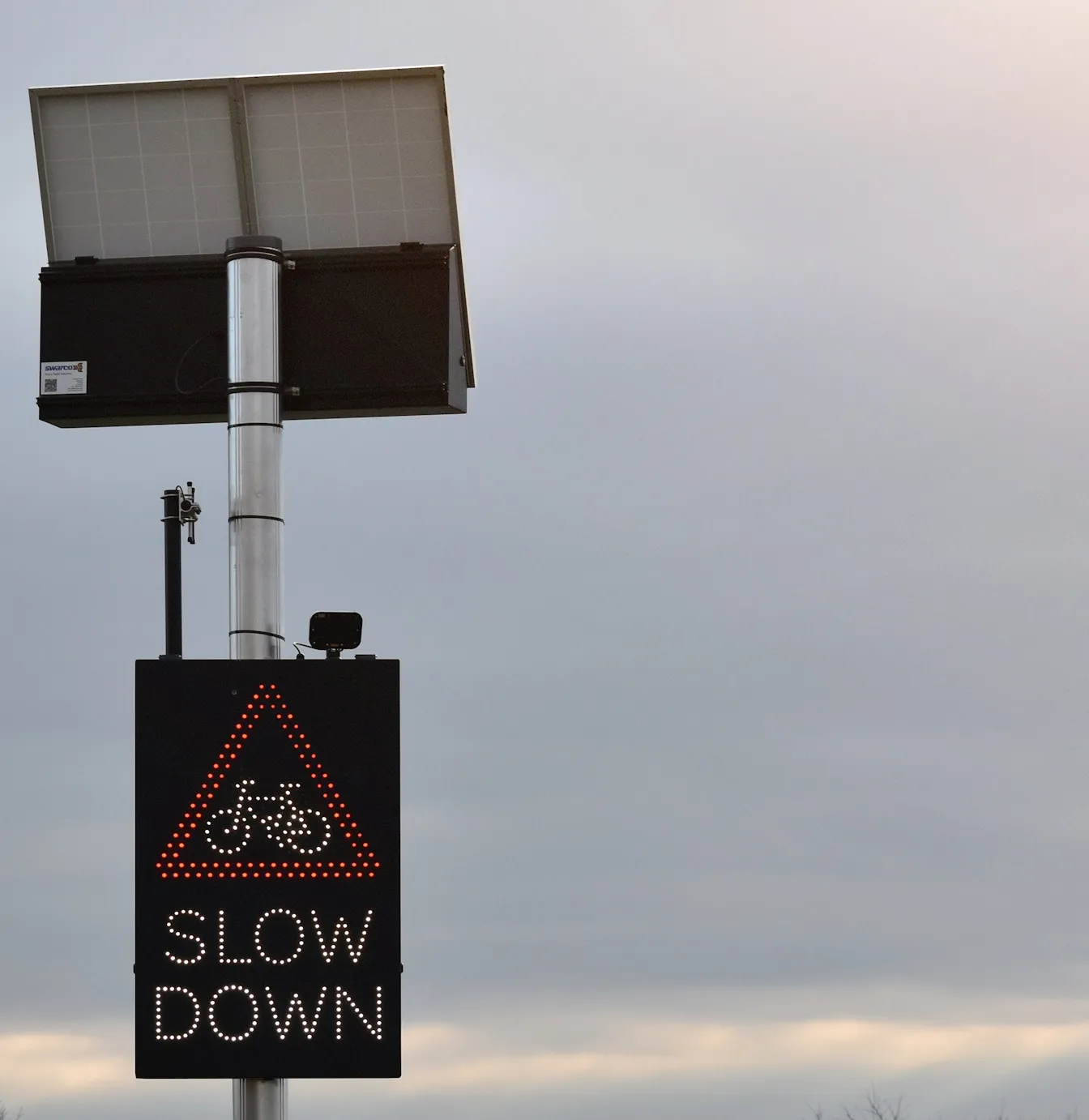
Swarco Traffic has created a ‘bicycle-ahead’ warning system for drivers on busy country lanes in the English county of Bedfordshire.
Central Bedfordshire Council wanted to improve protection for cyclists and encourage safer cycling on its rural roads where there is often limited visibility. It turned to local engineering contractor Jacobs Engineering and Swarco to provide the solution.
“Jacobs asked us to design a scheme that would detect a cyclist in the lanes and alert motorists to their presence,” said Paul Wright, technical estimator at Swarco UK and who had the responsibility for designing the solution. “The lanes leave both cyclists and motorists blind to one another, with high hedges that make it difficult to see the road ahead.”
The Swarco-engineered solution uses vehicle-activated signs at each end of a defined detection zone, with each zone being around 750m in length. When a cyclist passes into the zone, a signal is sent from an AGD 318 traffic control radar to the signs at either end of the zone. The signs illuminate to warn approaching drivers travelling above a pre-set speed threshold that a cyclist is in the area.
The signs also display a warning message advising drivers to reduce their speed.
The fully solar-powered solution enables real-time information updates and status reports to be accessed. This includes information on power, communication and fault detection to ensure the safety critical signs remain at optimum capacity.










